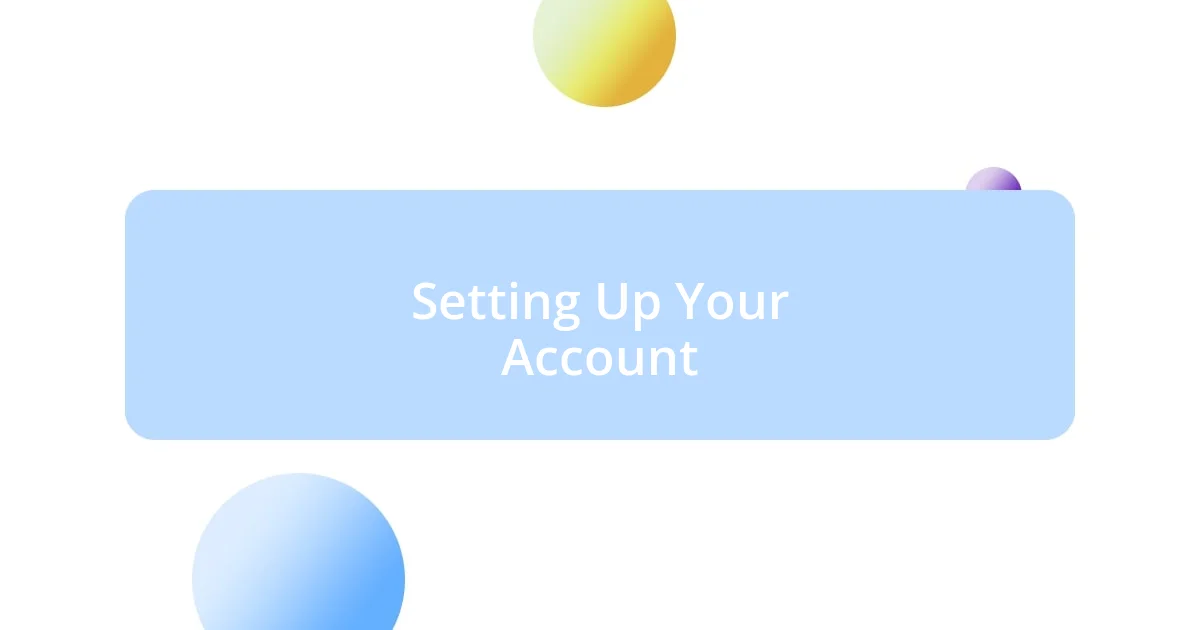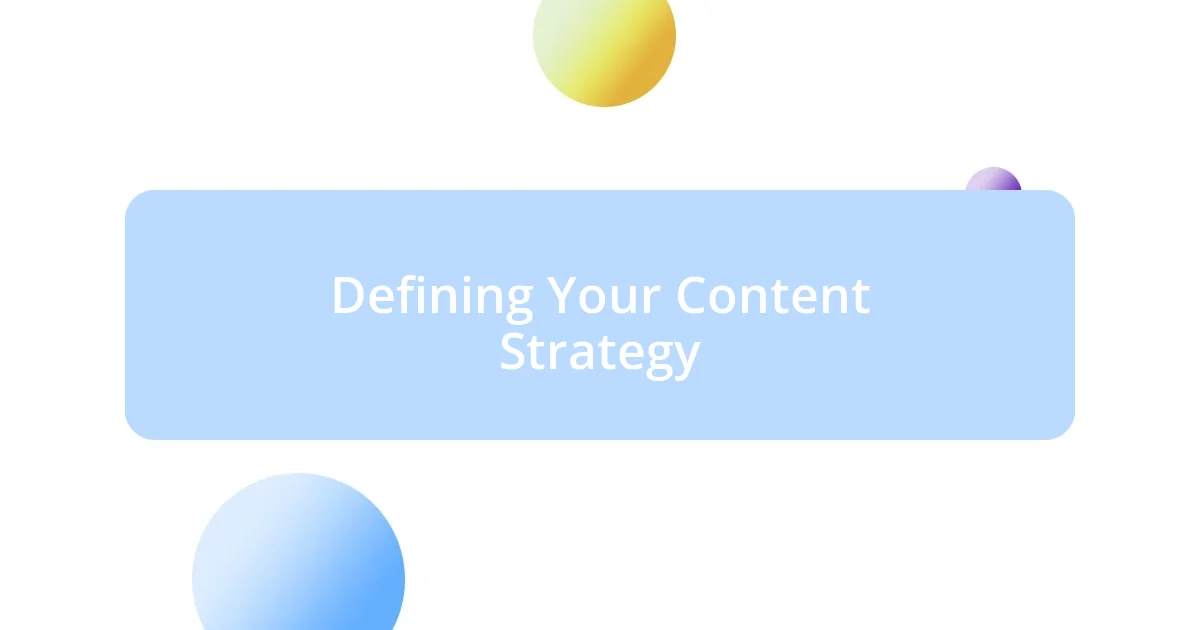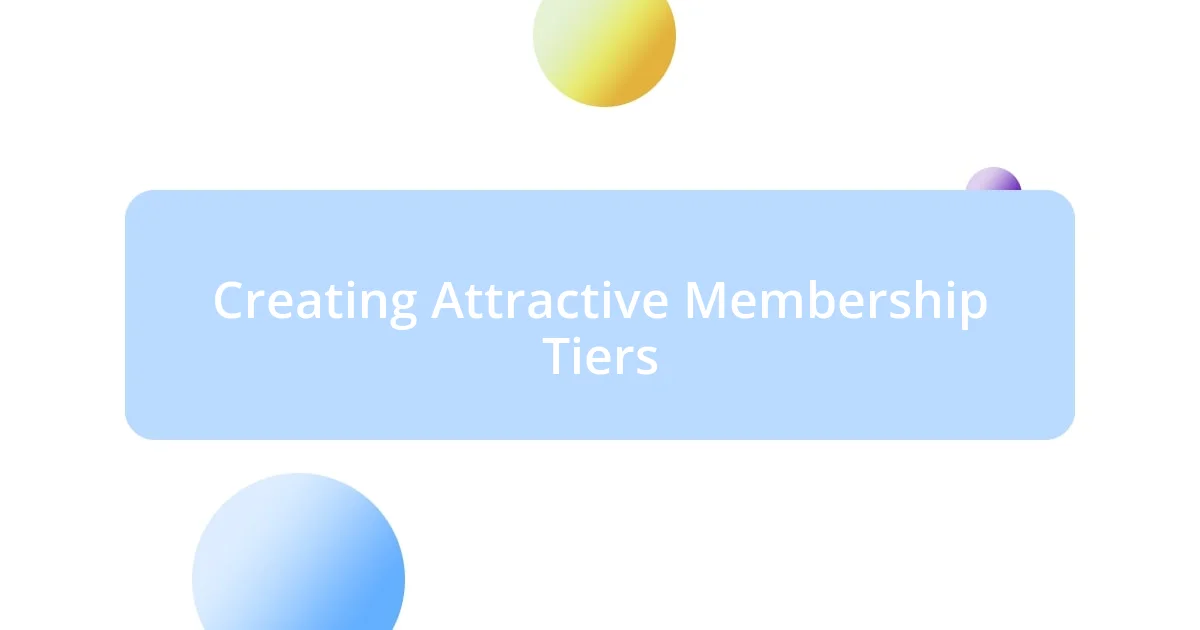Key takeaways:
- Setting up a Patreon account requires thoughtful selection of membership tiers, clear benefits, and a compelling personal profile to foster community connection.
- Creating a content strategy involves defining the type and frequency of content to maintain engagement while balancing exclusivity and accessibility among different membership tiers.
- Active engagement with supporters through direct feedback and community-building initiatives enhances relationships and adapts content strategies based on audience preferences.

Understanding Patreon Basics
Patreon is a unique platform designed for creators to earn a sustainable income by connecting directly with their supporters. From my experience, it’s like a bridge between artistic passion and financial stability. Have you ever wondered how that feels, to have people willingly support your work?
Setting up a Patreon page involves choosing the right membership tiers, defining the benefits for your patrons, and articulating what your vision is. When I created my tiers, I thought about what value I could offer—whether it was exclusive content, early access, or even behind-the-scenes insights. Deciding on these benefits felt both exciting and a little daunting—is anyone going to want this?
The beauty of Patreon lies in the community aspect. The joy of interacting with patrons who appreciate your work is unmatched. I still remember the thrill of my first comment from a supporter, and it hit me—this isn’t just about money; it’s about creating a space where we can share and grow together. Have you ever experienced that kind of connection through your work? It’s transformative.

Setting Up Your Account
Once you’ve decided on your membership tiers, it’s time to set up your account. I remember the moment I clicked “Create Account”—a mix of anticipation and nerves washed over me. The process was straightforward, which was a relief. You’ll need to provide your email, create a password, and verify your account, but it’s the next steps that really made the experience come alive.
Here are a few key things to keep in mind when you set up your account:
- Choose a compelling profile picture: I opted for a bright, engaging image that represents my brand. It really helps create an instant connection.
- Write a captivating bio: Make sure it reflects your personality and mission. I spent time crafting mine, as it was my chance to connect before patrons even hit the “subscribe” button.
- Link your social media: This part is crucial for building a community. I found that promoting my Patreon through platforms where I already had followers made a significant difference in visibility.
- Set your payment method: It’s a bit boring, but necessary. I felt a sense of accomplishment once I had everything set up!
Each element of your account contributes to your creator presence, and this is your canvas!

Defining Your Content Strategy
Defining a content strategy for your Patreon page is essential. It’s like creating a roadmap that guides your creative journey. When I was planning mine, I realized I had a lot of ideas, but I needed to focus. What did I want to emphasize? What kind of content would resonate with my audience? By asking these questions, I clarified my vision, which helped me decide on the type of content I would create, be it videos, blogs, or exclusive art pieces.
One crucial aspect to consider in your strategy is the frequency of your content. I remember feeling overwhelmed by the pressure to deliver regular updates. However, I learned that consistency is key, but it needs to be manageable. For instance, I settled on a bi-weekly schedule, which allowed me to maintain quality without burning out. If you push yourself too hard, it may impact the authenticity of your work. Balance is essential to sustaining your creativity.
Moreover, differentiating between types of content is equally important. Think about whether you’ll offer tier-specific perks or general updates for all your patrons. I found that having a mix keeps things fresh and engaging. For example, I created behind-the-scenes updates for my upper-tier patrons and fun, less formal posts for everyone else. This method allowed me to build a stronger connection with each group without feeling overwhelmed.
| Content Type | Frequency |
|---|---|
| Exclusive Videos | Monthly |
| Behind-the-Scenes Posts | Bi-weekly |
| Q&A Sessions | Quarterly |
| Regular Updates | Weekly |

Creating Attractive Membership Tiers
Creating attractive membership tiers is where I found the magic happens. Initially, I struggled with how to price them – which benefits would resonate most and entice patrons to commit? After some trial and error, I settled on tier names that reflected both the value and the experience I wanted to offer. It turned out that a little creativity goes a long way; for instance, naming one tier “The Creative Collective” made it sound appealing, didn’t it?
I remember how I crafted the perks for each tier. Instead of making a generic list, I connected personally with potential patrons. For my mid-tier option, I chose to include personalized shout-outs in my videos, which added a nice touch for folks who wanted a sense of belonging. Does offering something unique and personal help patrons feel valued? Absolutely! Engaging your audience is crucial, and seeing their names pop up made the experience feel truly special for all of us.
Lastly, the balance of exclusivity and accessibility within each tier is key. I made sure that while my higher tiers had exclusive content, my lower tiers still offered great value. When I released a special patron-only video, it was thrilling to see the excitement from both new and long-time supporters. This tier structure not only fostered community but also made everyone feel included, and that’s something I believe every creator should aim for.

Promoting Your Patreon Page
Promoting your Patreon page effectively is key to attracting and retaining patrons. I remember the first time I shared my Patreon link on social media. It was nerve-wracking! I worried about how my friends and followers would react. But much to my surprise, the response was overwhelmingly positive, and it showed me how valuable my existing network could be for promotion.
I also learned the importance of creating eye-catching visuals. When I designed promotional graphics with snippets of my content, I noticed that engagement soared. Using a mix of videos and images helped convey what my Patreon offered, making the pitch not only clearer but also more appealing. Have you ever thought about how visuals can capture attention more effectively than words alone? In my experience, integrating compelling images can truly elevate your message.
Additionally, I found that engaging directly with my audience during live streams or Q&As led to meaningful connections. I often invite questions about my Patreon during these sessions, and it transforms into an exciting dialogue. People appreciate the opportunity to understand what they’re supporting better. Have you tried this approach? It’s incredible to see the interest grow when potential patrons feel they’re part of the conversation, rather than just on the receiving end of a one-sided pitch.

Engaging with Your Supporters
There’s something truly special about engaging with supporters on a personal level. I’ve found that regular updates, like behind-the-scenes content or exclusive sneak peeks, create a sense of intimacy between me and my patrons. For instance, when I share the creative process behind a project, it feels like I’m inviting them into my world. Have you ever experienced that buzz when someone comments on your post, expressing genuine interest? It’s in those moments that I realize how meaningful this connection can be.
Another strategy that has worked wonders for me is soliciting feedback directly from patrons. I remember sending out a quick poll about what content they’d like to see next, and the responses flooded in! Their enthusiasm not only guided my creative direction but also reinforced that they valued their input in this collaborative journey. How often do we overlook the wealth of ideas our supporters might have? It’s a reminder that engagement isn’t just about giving, but also about listening and adapting.
In my experience, community-building activities, like themed challenges or collaborative projects, have brought my supporters closer together. I once organized a small art challenge where patrons could submit their work inspired by my content. The results were heartwarming—seeing their creativity sparked by my ideas made me feel incredibly connected to each of them. Have you thought about how much more vibrant your community could be if you encouraged their creativity? It’s these little initiatives that transform followers into a thriving community.

Analyzing and Adjusting Your Strategy
Analyzing and adjusting your strategy on Patreon is an ongoing journey. I remember seeing a drop in my patron numbers after an initial surge. It was tough to process, but I took it as a cue to dig deeper. I began analyzing what content resonated most with my audience. By examining engagement metrics and feedback, I learned that certain project updates sparked far more interest than others. Have you looked at your analytics lately? Sometimes, they reveal patterns and preferences that can truly guide your next steps.
Experimentation is also part of the strategy adjustment process. One month, I decided to introduce tier-specific rewards based on feedback. I crafted new incentives and, frankly, I was anxious about how they would be received. To my delight, patrons responded positively, feeling valued for their unique levels of support. It was an eye-opener—adjustments don’t need to be massive; even small tweaks can invigorate interest. I often ask myself, “What if I tried this?” Being open to trying new ideas keeps my content fresh and my supporters engaged.
Ultimately, I find that fostering a culture of adaptability is crucial. When I communicate regularly with my patrons about possible changes, it creates an environment of trust. After all, who doesn’t appreciate being part of the decision-making process? I once posted a question asking if they preferred monthly or quarterly updates, and the lively discussion that followed opened up a treasure trove of insights. These conversations not only guide my strategy but also strengthen the bond with my community, reminding me that we’re all in this together.














